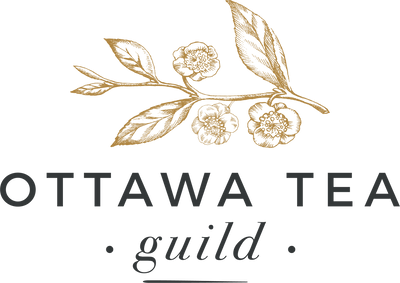Tea 101
Types of Teas and Benefits
All teas come from the same plant called the Camellia Sinensis. The way the plant is processed will determine the characteristics and qualities of each tea. Let’s explore each one:
White: White tea is very lightly oxidized and is mostly harvested in China. The buds and the leaves of the Camellia sinensis plant are harvested, briefly withered in natural sunlight, and lightly processed to prevent further oxidation. White teas contain all the same health benefits of black and green teas but they also have the highest level of antioxidants. This makes white teas very beneficial to the human body as it helps prevent cancer, improve cardiovascular functions, and fight bacteria.
Green: Green teas undergo minimal oxidation and are mostly harvested throughout Asia. The reduced oxidation allows the tea leaves to retain the compounds that provide maximum benefits for when it is steeped.
Oolong: Oolong teas are semi-oxidized (between 8 - 85%) and are often harvested in China. This tea undergoes a unique withering process under the strong sun before it is curled and twisted. Oolong teas generally contain caffeine, but less than black teas. They often have sweet, fruity, and honey aroma.
Black (also known as Red tea in China): Black teas are fully oxidized and are often harvested in Japan and China. They contain the highest level of caffeine, which gives it a much stronger flavor than the other teas.
Pu’erh: The Pu’erh tea is a dark tea that undergoes microbial fermentation and oxidation after they have been dried and rolled. This tea is often harvested in the province of Yunnan in China. Pu’erh teas are rolled in various shapes (a flat disc, a ball, a pumpkin like shape) to facilitate transportation or simply for the aesthetic appeal. This tea, unlike the others, improves over time and are highly valued in China.
Rooibos: The rooibos tea comes from the Calicotome villosa plant and is often harvested in South Africa. This tea is becoming popular in the Western countries due to it’s many health benefits related to its high levels of antioxidants, lack of caffeine, and low tannin levels compared to fully oxidized black teas.
Herbal: Herbal teas do not contain any leaves from the Camellia Sinensis plant, therefore it is not considered a ‘real’ tea and contains absolutely no caffeine. However, herbal tea is infused in boiling water to extract flavors just like the teas listed above, which is why we often categorize is as a tea. Herbal teas are often comprised of dried fruit, nuts, herbs, and spices.
Steeping the Perfect Cup of Loose Leaf Tea
The key to steeping the perfect cup of tea requires 3 important components:
Clean, filtered water
Approximately 1 tsp. of tea,
Water at a specific temperature
Clean, filtered water
Approximately 1 tsp. of tea,
Water at a specific temperature
Steeping Instructions
| Tea Type | Water Temperature (degrees Fahrenheit) | Steeping Time |
| Black | 212 degrees (boiling point) | 3-5 minutes |
| Green | 175 degrees | 1-3 minutes |
| White | 185 degrees | 2-4 minutes |
| Oolong | 195 degrees | 2-4 minutes |
| Pu'erh | 212 degrees | 3-5 minutes |
| Herbal | 212 degrees | 3-6 minutes |
| Rooibos | 212 degrees | 3-6 minutes |
